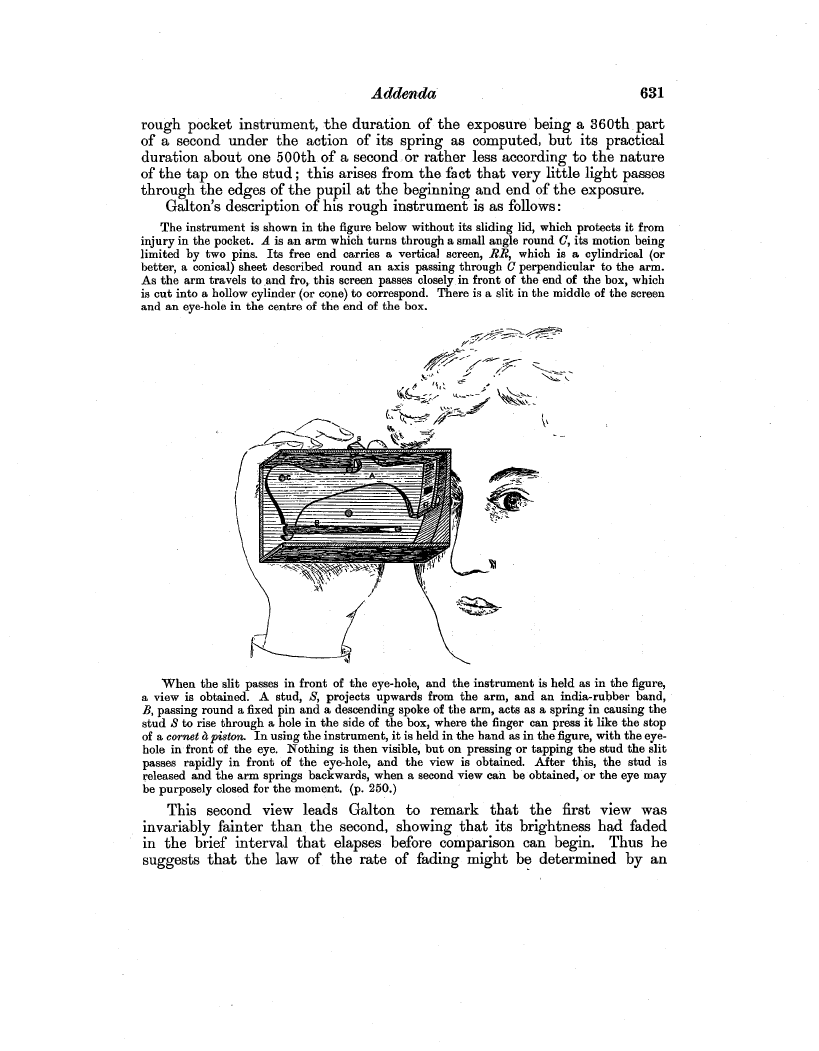| ||||||

OCR Rendition - approximate
Addenda 631 rough pocket instrument, the duration of the exposure being a 360th part of a second under the action of its spring as computed, but its practical duration about one 500th of a secondd or rather less according to the nature of the tap on the stud ; this arises from the fact that very little light passes through the edges of the pupil at the beginning and end of the exposure. Galton's description of his rough instrument is as follows The instrument is shown in the figure below without its sliding lid, which protects it from injury in the pocket. A is an arm which turns through a small angle round C, its motion being limited by two pins. Its free end carries a vertical screen, RR, which is a cylindrical (or better, a conical) sheet described round an axis passing through C perpendicular to the arm. As the arm travels to and fro, this screen passes closely in front of the end of the box, which is cut into a hollow cylinder (or cone) to correspond. There is a slit in the middle of the screen and an eye-hole in the centre of the end of the box.  /, ,~- ,, 16 „ When the slit passes in front of the eye-hole, and the instrument is held as in the figure, a view is obtained. A stud, S, projects upwards from the arm, and an india-rubber band, B, passing round a fixed pin and a descending spoke of the arm, acts as a spring in causing the stud S to rise through a hole in the side of the box, where the finger can press it like the stop of a cornet d piston. In using the instrument, it is held in the hand as in the figure, with the eyebole in front of the eye. Nothing is then visible, but on pressing or tapping the stud the slit passes rapidly in front of the eye-hole, and the view is obtained. After this, the stud is released and the arm springs backwards, when a second view can be obtained, or the eye may be purposely closed for the moment. (p. 250.) This second view leads Galton to remark that the first view was invariably fainter than the second, showing that its brightness had faded in the brief interval that elapses before comparison can begin. Thus he suggests that the law of the rate of fading might be determined by an
|